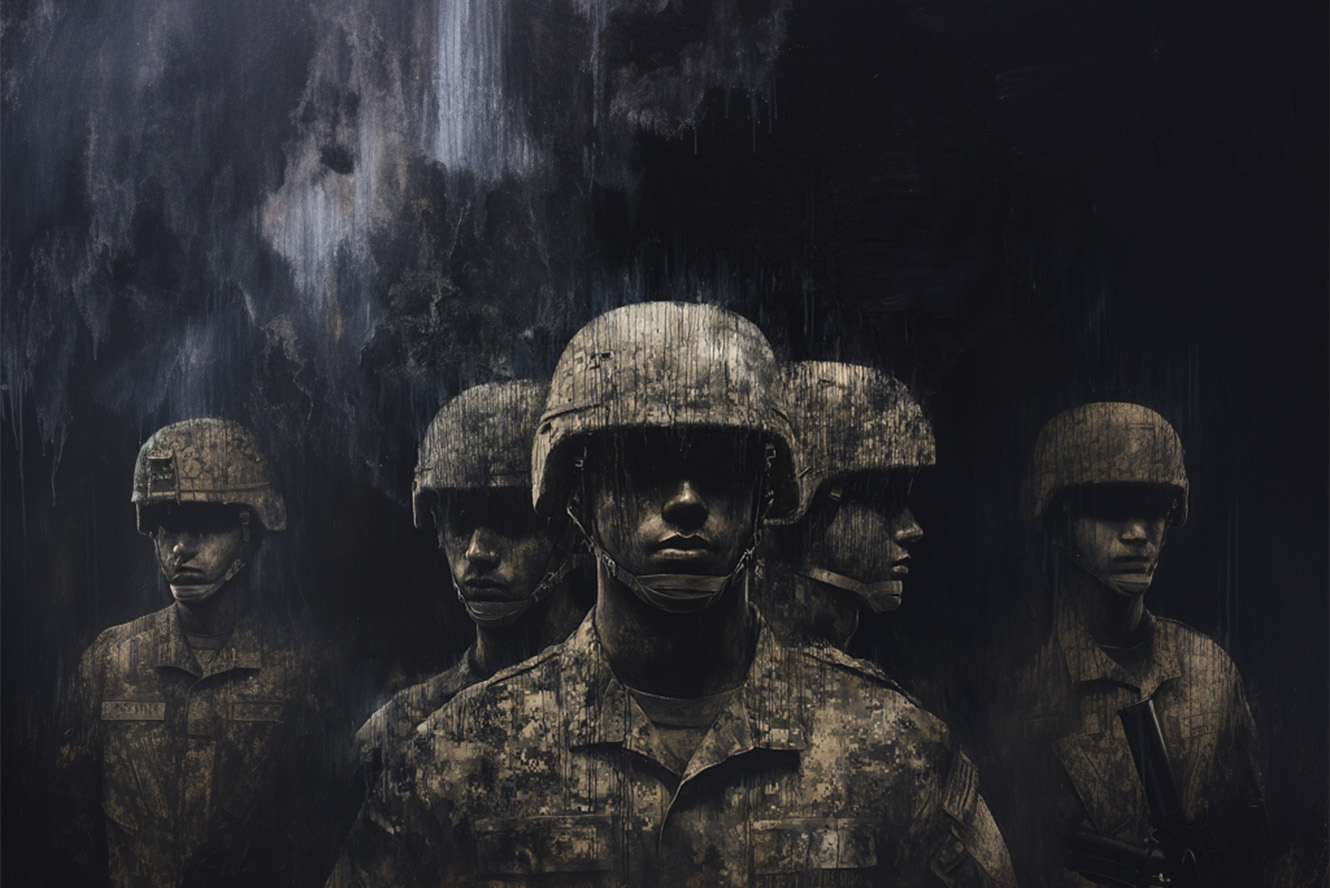Black Civil Rights and Black Corporate Rights
For the Balkinization symposium on Dylan C. Penningroth, Before the Movement: The Hidden History of Black Civil Rights (Liveright, 2023).Evelyn AtkinsonDylan Penningroth’s long-awaited Before the Movement: The Hidden History of Black Civil Rights is a masterful re-telling of the development of the civil rights of African Americans from Reconstruction through the Civil Rights Movement. This is a very welcome book, which like Penningroth’s previous work seamlessly integrates personal narrative, individual stories, and legal doctrine with broader themes. Expanding on the revelations of his article “Slavery, Freedom, and Social Claims to Property” (which I teach in my Race, Law, and Capitalism seminar, and which invariably bowls the students over), Penningroth unsettles long held assumptions about Black civil rights by showing how the newly-granted rights of legal personhood during Reconstruction actually built on an established system of property and contract “privileges” that enslaved people possessed.There is so much to say about this rich and exciting manuscript, but I’ll focus my comments on one aspect of the book dear to my heart: corporations. Before the Movement deeply examines how Black communities formed complex associations to structure their internal worlds, engage with law, and protect their communities. Historians have lauded Black communitarianism, particularly with regards to land ownership and mutual benefit societies, as a creative lifeline for Black Americans who were excluded from segregated and discriminatory white-run associations. Political economists have likewise examined how Black associations in the post-Civil War period challenged the dominant political economic philosophy of “market individualism,” presenting an alternative vision of what a democratic society could be. (219) In these tellings, associationalism was a vital part of Black survival and advancement within the system of Black Codes and Jim Crow. Yet as Penningroth illuminates, Black communitarianism also had a dark side. When disputes among an association’s members arose, such as between a demagogic preacher and his congregation about the appropriation of church funds, or among extended family members about the disposal of family land, things could get heated. When this happened, Black Americans turned to the “rights of every day use”: the common law of property and contract. Instead of constituting a separate world unto themselves, Black associations and their members were active players in the legal system, compelling state courts to engage with Black community practices and social relationships, and crafting new law in the process. The result was that state courts “regulated power and discrimination among Black people,” while Black litigants compelled courts to address novel issues of common law. (125) Penningroth discusses the myriad associations formed by Black people, including churches, businesses, mutual aid societies, labor unions, and extended families, in great depth. Some of the associations, he notes, officially incorporated in order to achieve their objectives. One chilling example he gives is that of Black rifle societies, which sought to obtain corporate charters in order to gain the legal status of a militia. Penningroth explains, “After all, ‘one man’s mob is another man’s militia,’ and the difference was often a corporate charter from the state.” (131) Other times, Penningroth notes, associations specifically avoided incorporation in order to evade state oversight, as was the case with mutual aid societies. These examples provide a tantalizing window into the early history of race and corporate law, an area that has only recently begun to be explored by legal historians. Incorporation, in sum, was a vital and carefully thought through strategy by Black associations in this period. Before the Movement could do even more to explore the difference between unincorporated associations and corporations. As Penningroth notes at various points, there are important differences between corporate rights and privileges and individual rights and privilege. (122-24) Paying attention to these differences sheds further light on the engagement of Black communities with white supremacist state legislatures and courts. Yet the book tends to discuss the two in tandem, and it is often difficult to tell what association used which form and why that might be important. This muddies the waters about how we understand the role of incorporation in Black associationalism more broadly. For instance, multi-generational landowning families – “a large and complicated tangle of kin” – the book describes as “something like an association – a family corporation.” (p. 115) Family Bibles are “unofficial corporate charters.” (220) Blurring the line between corporations and unincorporated associations this way unfortunately obscures Penningroth’s insight into how Black communities used or declined incorporation for strategic purposes. The
Dylan Penningroth’s long-awaited Before the Movement: The Hidden History of Black Civil Rights is a masterful re-telling of the development of the civil rights of African Americans from Reconstruction through the Civil Rights Movement. This is a very welcome book, which like Penningroth’s previous work seamlessly integrates personal narrative, individual stories, and legal doctrine with broader themes. Expanding on the revelations of his article “Slavery, Freedom, and Social Claims to Property” (which I teach in my Race, Law, and Capitalism seminar, and which invariably bowls the students over), Penningroth unsettles long held assumptions about Black civil rights by showing how the newly-granted rights of legal personhood during Reconstruction actually built on an established system of property and contract “privileges” that enslaved people possessed.
There is so much to say about
this rich and exciting manuscript, but I’ll focus my comments on one aspect of
the book dear to my heart: corporations. Before the Movement deeply
examines how Black communities formed complex associations to structure their internal
worlds, engage with law, and protect their communities. Historians have lauded
Black communitarianism, particularly with regards to land ownership and mutual
benefit societies, as a creative lifeline for Black Americans who were excluded
from segregated and discriminatory white-run associations. Political economists
have likewise examined how Black associations in the post-Civil War period
challenged the dominant political economic philosophy of “market individualism,”
presenting an alternative vision of what a democratic society could be. (219) In
these tellings, associationalism was a vital part of Black survival and
advancement within the system of Black Codes and Jim Crow.
Yet as Penningroth illuminates,
Black communitarianism also had a dark side. When disputes among an
association’s members arose, such as between a demagogic preacher and his
congregation about the appropriation of church funds, or among extended family
members about the disposal of family land, things could get heated. When this
happened, Black Americans turned to the “rights of every day use”: the common
law of property and contract. Instead of constituting a separate world unto
themselves, Black associations and their members were active players in the
legal system, compelling state courts to engage with Black community practices
and social relationships, and crafting new law in the process. The result was
that state courts “regulated power and discrimination among Black people,” while
Black litigants compelled courts to address novel issues of common law. (125)
Penningroth discusses the myriad
associations formed by Black people, including churches, businesses, mutual aid
societies, labor unions, and extended families, in great depth. Some of the
associations, he notes, officially incorporated in order to achieve their
objectives. One chilling example he gives is that of Black rifle societies,
which sought to obtain corporate charters in order to gain the legal status of
a militia. Penningroth explains, “After all, ‘one man’s mob is another man’s
militia,’ and the difference was often a corporate charter from the state.”
(131) Other times, Penningroth notes, associations specifically avoided
incorporation in order to evade state oversight, as was the case with mutual
aid societies. These examples provide a tantalizing window into the early history
of race and corporate law, an area that has only recently begun to be explored
by legal historians.
Incorporation, in sum, was a vital
and carefully thought through strategy by Black associations in this period. Before
the Movement could do even more to explore the difference between
unincorporated associations and corporations. As Penningroth notes at various
points, there are important differences between corporate rights and privileges
and individual rights and privilege. (122-24) Paying attention to these
differences sheds further light on the engagement of Black communities with
white supremacist state legislatures and courts. Yet the book tends to discuss
the two in tandem, and it is often difficult to tell what association used
which form and why that might be important. This muddies the waters about how
we understand the role of incorporation in Black associationalism more broadly.
For instance, multi-generational landowning families – “a large and complicated
tangle of kin” – the book describes as “something like an association – a
family corporation.” (p. 115) Family Bibles are “unofficial corporate
charters.” (220) Blurring the line between corporations and unincorporated
associations this way unfortunately obscures Penningroth’s insight into how
Black communities used or declined incorporation for strategic purposes. The
distinction between unincorporated associations and corporations is vital to
understanding the nature of Black communities’ relationship with law in this
period.
One signal distinction is the
relationship of the incorporators and the state. In thinking about how Black
persons structured their associational lives in this period, the process of
petitioning for incorporation and invoking the involvement of the state is
worth examining carefully. During the nineteenth century, in order to utilize
the corporate form, erstwhile incorporators usually had to petition the state
legislature for a charter of incorporation. (Certain corporations, like
churches, were able to “generally incorporate,” i.e. to file a
certificate of incorporation with the state without going through the
chartering process.) The chartering process typically involved a legislative
discussion of the terms of the proposed corporate charter. Legislatures could and did impose limitations
on the amount of property the corporation could own, the number and cost of
shares, the selection process for the board of directors, etc. State
legislative records are replete with such discussions, including involving
petitions for incorporation that included the word “Colored” prominently in
their corporate appellations. The chartering process gave the state much more
say in the structure and power of incorporated entities than private,
unincorporated associations. As such, for Black incorporators, incorporation
was both a distinct method of resistance to discrimination and an express
appeal to white supremacist legislatures and courts to involve themselves with
the internal administration of Black corporations’ affairs.
Another reason to distinguish
corporations from unincorporated associations involves the nature of
rights-bearing legal personhood for Black people in this period. When
Black-owned corporations invoked the rights of contract and property, they did
so not by virtue of their members’ legal personhood, but as “legal persons” themselves. As I’ve shown in previous work, questions
about the legal personhood of corporations and racial minorities were discussed
in tandem throughout the turn of the century. Overlapping and intersecting
legal cases involving the rights of corporations and those of racial minorities
shaped the vision of rights-bearing legal personhood that we have today. Yet in
important ways, the rights of corporate “persons” and flesh-and-blood
individuals were quite different. Corporations brought more cases under the
Fourteenth Amendment and enjoyed more robust rights to contract and property
ownership than Black Americans did. (One Progressive-Era legal scholar
calculated that of the 604 cases argued in the Supreme Court involving the
Fourteenth Amendment between 1868 and 1912, 312 involved corporations, while
only about one per year involved Black Americans.) Incorporation allowed Black
Americans to choose what kind of rights-bearing legal “people” they wanted to
be: warm-blooded individuals or corporate “persons.”
Distinguishing the rights of
corporations and those of Black individuals would add additional support to
Penningroth’s argument. For example, the 1908 case People’s Pleasure Park Co
v. Rohleder would be an excellent vehicle for exploring the power of
corporate personhood in Black civil rights. In this case, the Virginia Supreme
Court held that corporations had no race, and so an amusement park corporation
owned by and operated for the benefit of Black people could not be excluded
from a racially-segregated suburb, because the restrictive covenant that
prohibited the sale of the land to “person or persons of African descent” did
not apply to corporate “persons.” This argument would not have been possible if
the amusement park was operated as an association. The Black owners of the
amusement park, in other words, used the corporate form to specifically evade
Jim Crow.
Penningroth’s analysis of the
“rights of daily use,” the common law rights of contract and property, offers an
insight into why the Virginia Supreme Court was willing to permit a Black-owned
corporation serving Black patrons to buy property in an all-white neighborhood.
During Jim Crow, Penningroth reveals, Southern white men who firmly believed in
white supremacy nonetheless recognized and respected the legal structure of
property and contract even when Black Americans were involved. Rather than rely
solely on violence and intimidation, white supremacists worked within the
formal structure of the law to conduct routine transactions as well as to maintain
racial hierarchy and oppression. Even white supremacist judges took seriously
Black Americans’ rights of property and contract. To do otherwise, Penningroth
argues, would have been to undermine the common law rules on which white as
well as Black people depended. For example, a Black man chased off his
homestead through violent intimidation would leave the land without a clear
chain of title, impairing the ability of the new white possessor to dispose of
the land at a later date. (97) It was much safer, legally speaking, for the
white supremacist to negotiate a carefully worded, covertly exploitative
mortgage or lease-to-own contract to legally dispossess the Black man of his
land. Thus, despite widespread oppression, the formal civil rights of Black
Americans were by and large respected in the Jim Crow legal system. Perhaps the
Virginia Supreme Court in People’s Pleasure Park was motivated by a
similar concern about corporate law – to recognize corporations as racial
“persons” might have had problematic consequences for corporate law generally
down the line.
Another avenue for deeper
examination is how, just as Black people’s rights claims helped shape common
law, Black corporations also influenced corporate law. Even as Black people
used corporate personhood to circumvent Jim Crow, they also challenged the broader
legal conception of the corporation. By the turn of the nineteenth century, the
dominant legal understanding was that corporations were primarily private,
profit-making entities, holding the same rights as market individuals and
subject to no additional duties. Yet Black incorporators presented a different
vision of the corporation, what we today might call a “benefit corporation” – a
corporation that “reconcile[d] ‘plain business’ with the corporation’s duty to
‘the race.’” (127) (Aaron Dhir is also doing some fantastic work on this
conflict in his manuscript on litigation involving Marcus Garvey’s Black Star
Line.) This vision of the public service corporation harkened back to early
nineteenth-century corporate law that prioritized the corporation’s public
benefit over pecuniary gains. While Penningroth discusses how “Black power in
the waning days of Reconstruction grew in large part from the details of
corporation law,” (127) the reverse is also true; the Black “corporate person”
in turn challenged the (still relatively new) vision of the corporate person as
the equivalent of a private, self-serving, free market participant, with
important legal consequences.
In sum, Penningroth offers an
intriguing new perspective on Black associationalism that demands a deeper
inquiry. I look forward to teaching this book next year and to engaging with it
in my scholarship.
Evelyn Atkinson is the Charles E.
Lugenbuhl Associate Professor of Law and the Murphy Institute at Tulane Law
School. She can be reached at eatkinson1@tulane.edu.























































































































































